Quest 3: How to extend battery life reliably
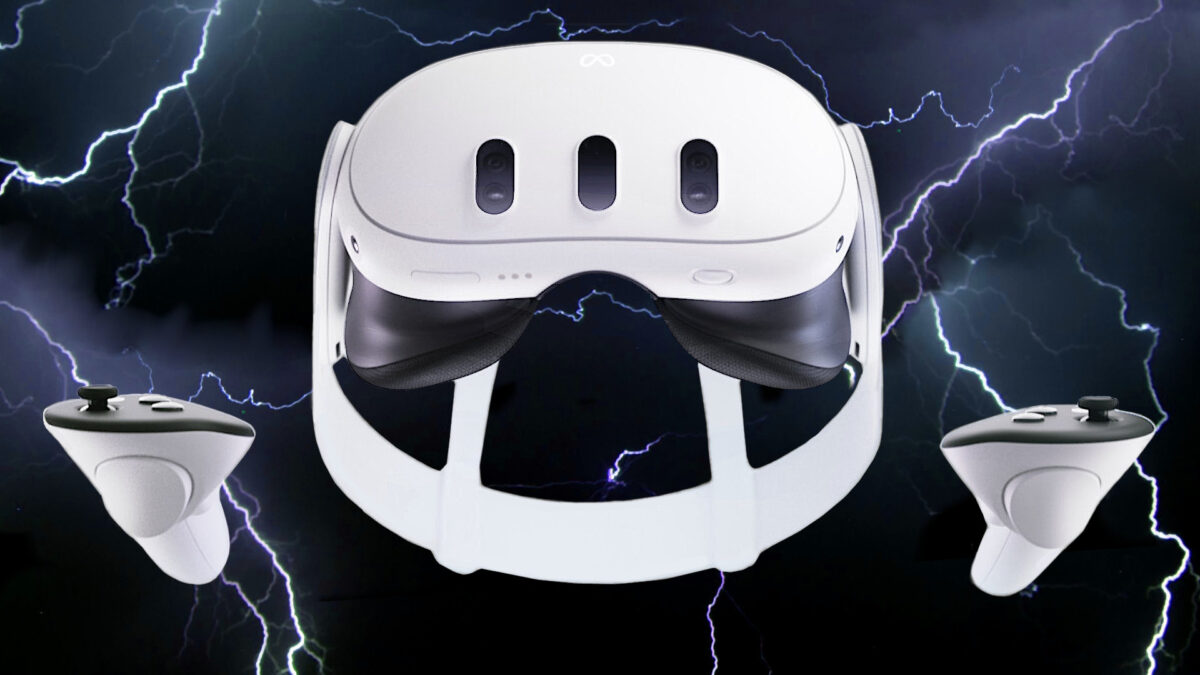
I found great third-party products that can reliably extend the Quest 3's battery life, providing you more time in VR.
The Meta Quest 3 is a high-performance standalone VR headset with great mixed reality capabilities, but there's a price to pay for that much power, battery life. Updating two 2K displays 120 times each second is already demanding. The Quest 3 also processes stereoscopic color passthrough cameras, and runs game logic and physics simulations, while calculating your head and hand position within a virtual boundary.
Increased capabilities bring greater energy demands that shorten battery life, so if you want more than two hours of runtime, you need a reliable solution for powering the Quest 3 and keeping it charged.
Content
Charging the Meta Quest 3
The Meta Quest 3's battery performance is much like your phone's. Charging is faster when you aren't using the Quest 3 and requires more power to charge while using it. Unfortunately, that means you might have to stop during a critical moment in an exciting game like Assassin's Creed: Nexus VR to replenish your battery.
Meta provided a solution, the Quest 3 Elite Strap with battery, but it proved to be overly expensive and unreliable, at least when it first launched. After pausing sales of the Meta battery strap for a few weeks to resolve problems, it's available again, but the $130 price is still surprisingly high.
You can't use just any power bank to charge your Quest 3. It needs at least 18W to charge the device while in use, and even power banks rated at 18W may output less sometimes. Here are some good Quest 3 battery solutions that work well and cost less than Meta's official Quest 3 accessories.
Kiwi RGB Vertical Charging Stand for Quest 3
When you plug in your Quest 3, you usually have to use a USB-C cable. Meta sells a $130 Quest 3 charging dock that lets you place your headset and controllers into convenient holders for charging. It's expensive but works well. I really don't mind plugging in devices, but you might feel like it's an unnecessary hassle.
If you'd like a lower cost alternative that's also reliable, Kiwi sells a charging stand with a magnetic, single point charging connector so you simply put your headset down to start charging. Compared to Meta's dock, you save $50 on this sportier looking $80 charging stand with a customizable RGB light strip.
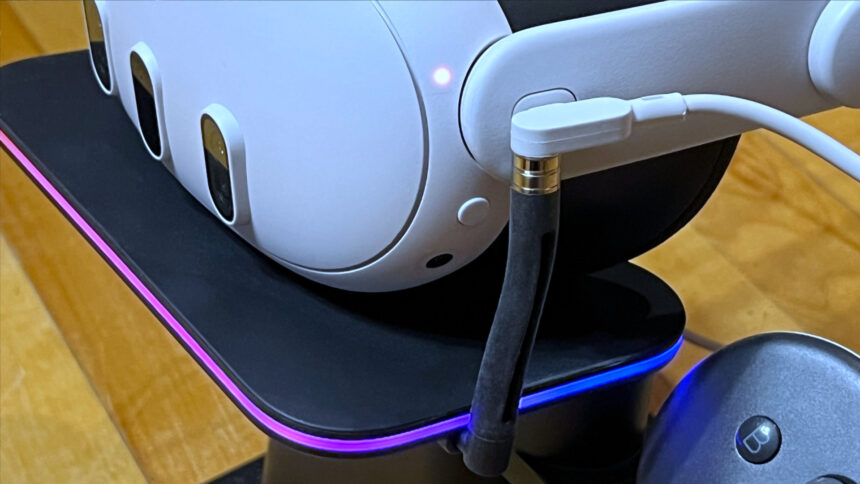
A closeup shows the magnetic SPC connector on the Kiwi charging stand. | Image: MIXED
Like Meta's dock, a charger isn't included. It also lacks Meta's rechargeable batteries for the Quest 3s Touch Plus controllers. The real value of the Kiwi RGB Vertical Charging Stand (Amazon) is using the single-point connector to charge both the Quest 3 and the Kiwi SPC Battery Head Strap mentioned below.
This same Kiwi charging stand works with the Quest 2 and Quest Pro as well.
Kiwi Single-Point-Charging Battery Head Strap for Quest 3
Kiwi is a well-known and trusted brand for VR accessories, and I found its Single-Point-Charging (SPC) Battery Head Strap (Amazon) to be a great option for Quest 3 gamers that want to keep playing for longer. Beyond the 6400mAh battery that's placed at the back, you get a halo strap with plush padding on the head strap and the rear pad that cups the back of your head.
Games like Asgard's Wrath 2 are luxuriously long and compelling enough that adding two to four hours to the Quest 3's usual two-hour play time is worth the $80 price of the Kiwi SPC Battery Head Strap. Kiwi's single-point-charging system is a convenient magnetic connector that makes it easy to charge the SPC Battery Head Strap with Kiwi's RGB Vertical Charging Stand, described above.
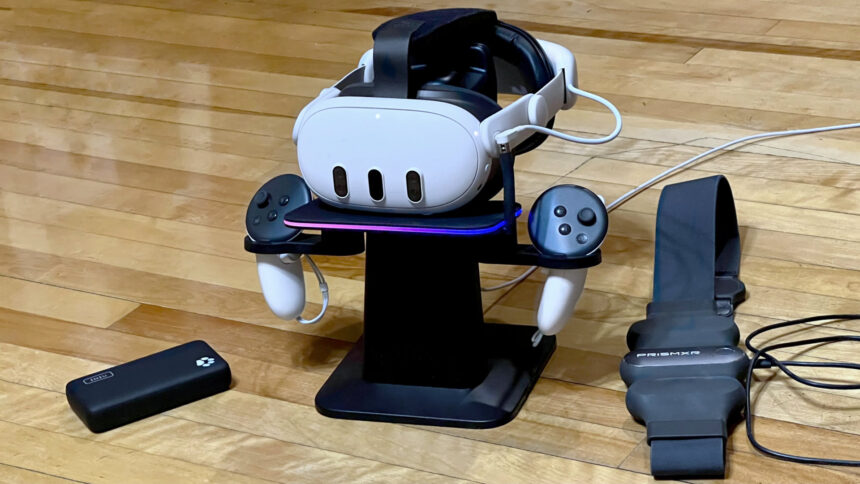
A Quest 3 with a SPC Battery Strap is charging on a Kiwi RGB Vertical charging stand. | Image: MIXED
In my testing, Kiwi's SPC Battery Head Strap was comfortable and reliably extended my Quest 3 battery life for at least 3 hours, depending on usage. After the Kiwi battery is depleted, the Quest 3 uses its internal battery. When charging, plug in the Kiwi battery at the back and the Quest 3 will also be charged.
If you aren't interested in the Kiwi Charging Stand, you can save a little money with the $60 Kiwi Battery Head Strap (Amazon), which lacks the magnetic SPC connector.
PrismXR Carina W1 Wearable Battery Pack
If your Quest 3 already feels comfortable, and you aren't looking for a battery strap, PrismXR sells a 30W battery belt with 10000mAh capacity for $65. The Carina W1 Wearable Battery Pack (Amazon) has more than enough power to charge your Quest 3 in the most rigorous conditions.
I measured 24W flowing into the Quest 3 to charge it up while I kept playing, and the battery climbed quickly. That means you can start without the Carina W1, then put it on if you think your Quest 3 will run out of charge before you're finished.
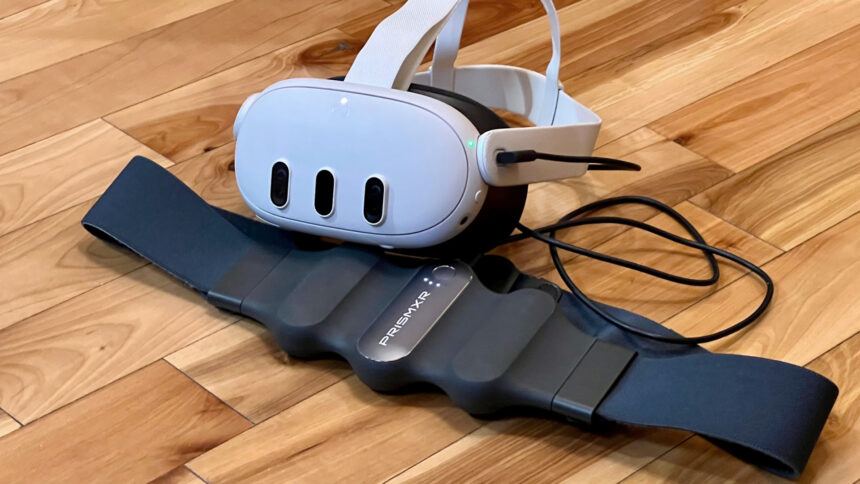
A Meta Quest 3 is charging with a PrismXR Carina W1 Battery Belt. | Image: MIXED
I like having the option of keeping my Quest 3 as light as possible, then buckling on the belt when needed. There are two strap sizes, and the belt can be worn around your waist or over a shoulder in a cross-body fashion.
I never ran out of power with the Carina W1 Wearable Battery Pack. It lasts a long time. PrismXR claims it adds four to nine hours of battery life, and I'm too busy to spend 11 straight hours in VR to test that upper limit.
I played 4 hours while charging a half-depleted Quest 3 battery, with about 30% of the Carina W1's capacity left. I'm convinced it has all the charging power I'd ever need for VR gaming.
24W+ Portable Charger / Power Bank
You don't have to get a battery pack that's specifically designed for the Quest 3. I had an Iniu power bank that I used for charging my phone. It worked with my Quest Pro, so I gave it a try with the Quest 3. It's a $28 Power Delivery 3.0 charger that can supply up to 18W and has a 20000mAh capacity.
To use a power bank with a Quest 3, you just need a USB-C charging cable so you can put the battery pack in a pocket or fanny pack while plugged into your VR headset.
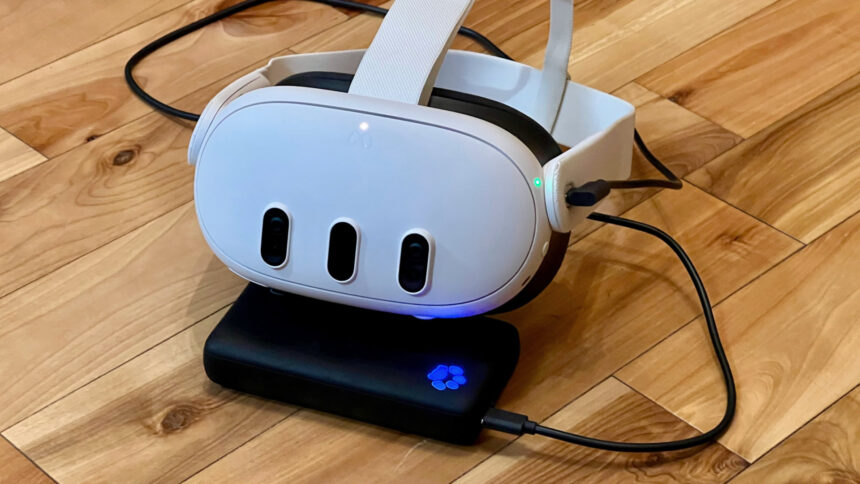
A Meta Quest 3 is charging with an Iniu 18W power bank. | Image: MIXED
Initially, the Iniu 18W charger worked well, supplying 18W of power to charge my almost completely dead Quest 3 while I used it. After the Quest 3 reached 14%, the Iniu's output dropped, ranging from 10 to 15 watts, causing the Quest 3 to slowly discharge despite being plugged in.
The takeaway is to get a power bank rated with at least 24W of output power, so it can charge the Quest 3 while using it. 18W can charge the Quest 3 when it's not being used. When in doubt, look for a solution that specifically mentions the ability to power your Quest 3 and ideally charge it while you play games.
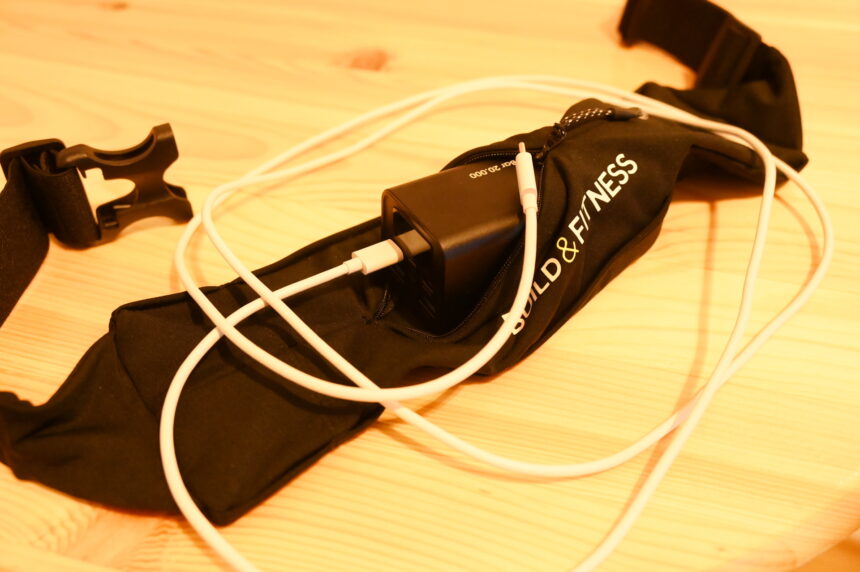
With this simple and inexpensive variant, the service life of the Quest 3 can be increased enormously without any loss of comfort. | Image: MIXED
My colleague Ben wears a 20,000 mAH power bank (Amazon Germany) with an output of 65W via USB-C in a sports belt (Amazon) and connects it to the Quest 3 using the original USB-C charging cable of the XR headset. Because of the high output, the Quest 3 charges faster than it can be drained by using it.
Note: Links to online stores in articles can be so-called affiliate links. If you buy through this link, MIXED receives a commission from the provider. For you the price does not change.